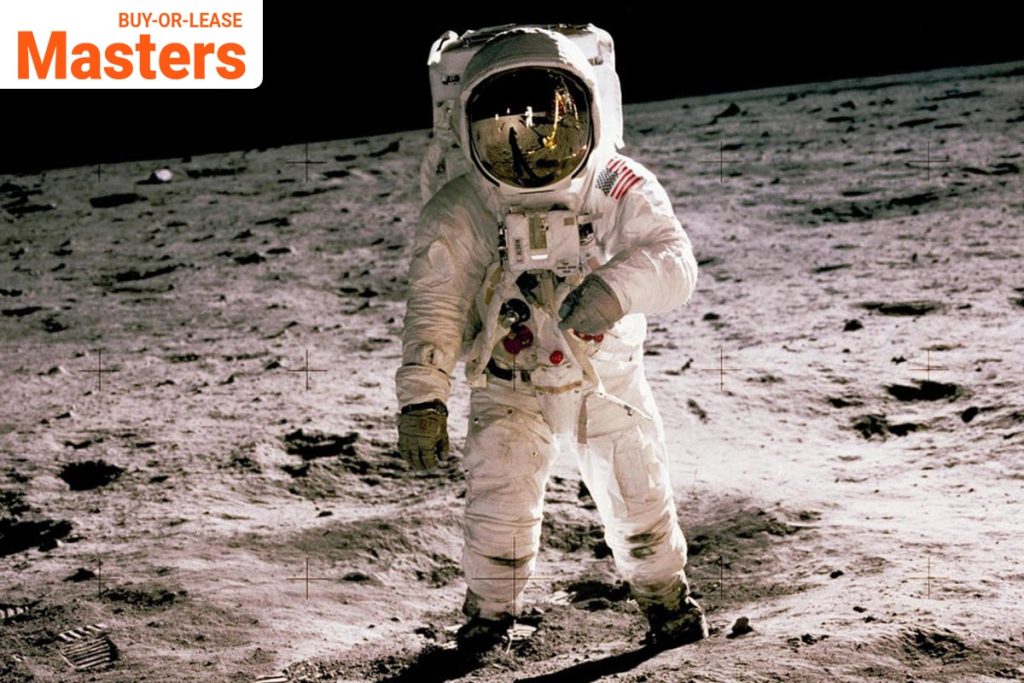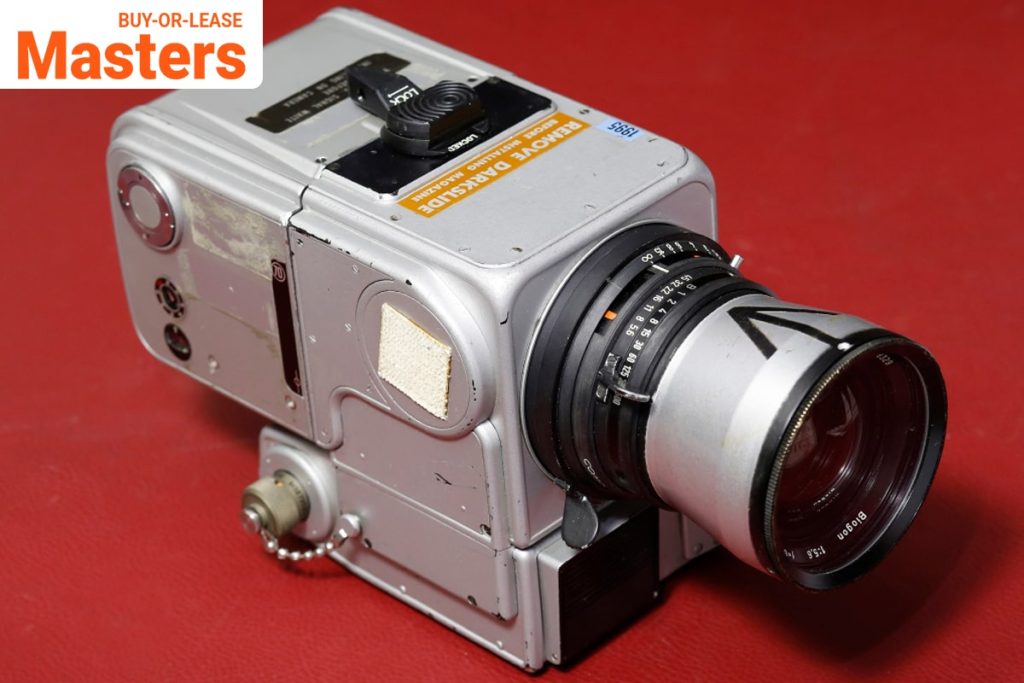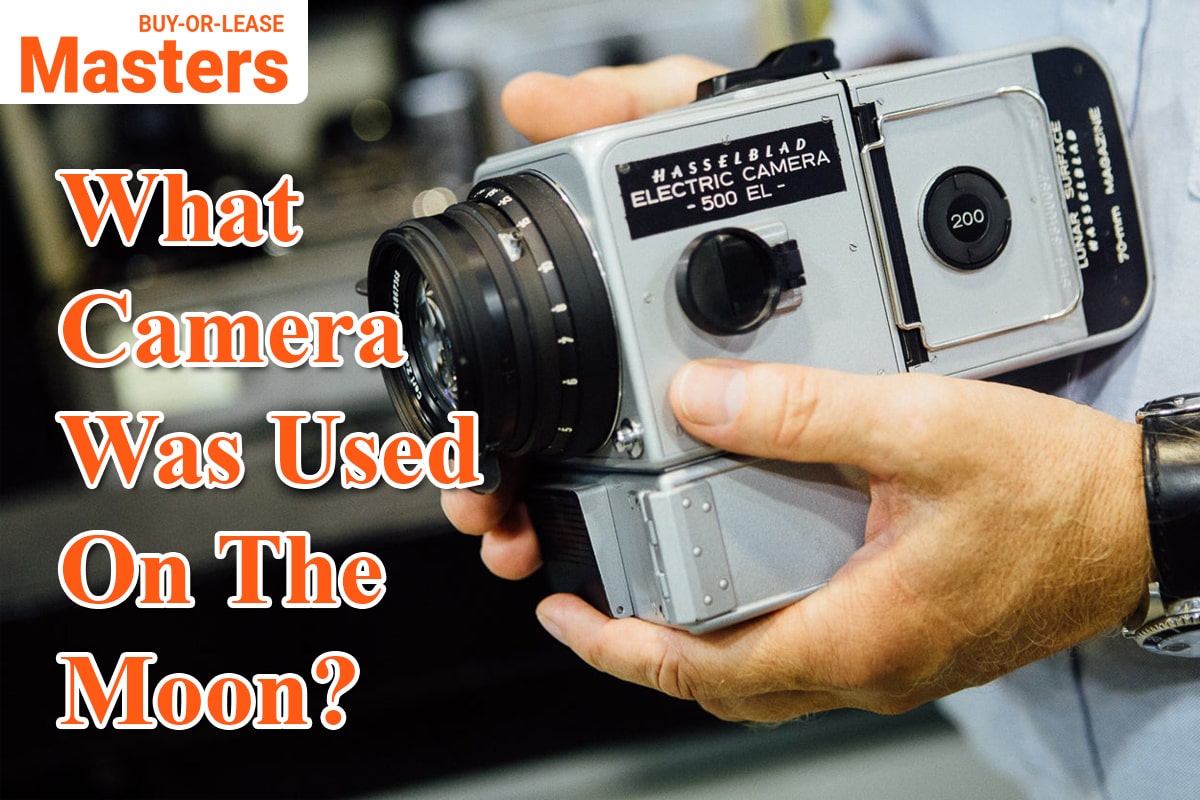Have you ever wondered what camera was used to capture the stunning images of mankind’s first steps on the moon? Was it a specialized model created by NASA or something more conventional? The truth is, the photos that came from one of humankind’s greatest feats were actually captured using modified Hasselblad 500EL cameras.
So how did these incredible tools manage to get all the way up to space and into history books? Read on below as Mastersbuyorlease explore this amazing piece of technology that helped pave our path into outer space!
What is The Lunar Surface Data Hasselblad 500EL Camera?
The camera in question is a modified version of the Hasselblad 500EL, a high-end medium format camera primarily used by professional photographers. This particular model was designated as the Lunar Surface Data Camera (LSDC) and was specifically adapted for use on NASA’s Apollo missions.
Modifications to Survive on The Moon
Before they could be sent on the Apollo 11 mission, these cameras underwent several modifications to withstand the harsh environment of the moon. This included a special aluminum shell that weighed 2.5 pounds and protected the cameras from extreme temperatures, radiation, and dust particles.
The camera’s film magazine was also modified to hold up to 200 exposures of specially designed Kodak film and was further adapted for use with bulky spacesuit gloves.
How it ended up being used on the moon?
Originally, NASA had planned to use a specialized camera designed by Westinghouse Electric Corporation for the Apollo missions. However, during training and testing, it was discovered that the Hasselblad 500EL produced higher quality images in a more user-friendly package.
This prompted NASA to switch from using the Westinghouse camera to solely relying on the Hasselblad. NASA even went on to modify the Hasselblad further by removing some of its non-essential components to reduce weight and increase functionality.
What modifications were made to fit the mission’s requirements?

The modifications made to the Hasselblad 500EL for its use on the moon were critical in ensuring the success of the Apollo missions. Some of these changes included adding a special glass plate to protect against radiation, a removable handle to help secure it inside the lunar module, and painting it white to prevent overheating.
Perhaps one of the most important modifications was the addition of a special crosshair in the camera’s viewfinder. This allowed astronauts to accurately frame their shots despite wearing bulky spacesuits and helmets. These modifications ensured that the Hasselblad was not only suitable for use on the moon but also helped capture some of the most iconic images in history.
The amazing results of using this revolutionary technology

Thanks to the Hasselblad 500EL, we have incredible images from the Apollo missions that continue to inspire and awe people all over the world. These photos were not only used for scientific purposes but also served as a powerful reminder of humanity’s ability to conquer new frontiers.
Today, the Hasselblad 500EL remains an important piece of technology that helped shape our understanding of the moon and its surface. Its legacy lives on as a symbol of human ingenuity and exploration, making it a truly remarkable camera in every sense of the word. So next time you see those breathtaking images from the moon, remember that they were captured using this incredible piece of equipment – the Hasselblad 500EL modified to survive and thrive on the lunar surface.
So the next time you look up at the moon, take a moment to appreciate not only mankind’s incredible achievements but also the amazing technology that made it all possible. The Hasselblad 500EL will forever hold a special place in history as the camera that captured humanity’s first steps on another world, making it truly out of this world. So next time you see those breathtaking images from the moon, remember that they were captured using this incredible piece of equipment – the Hasselblad 500EL modified to survive and thrive on the lunar surface.
How this camera changed the face of space exploration
The use of the Hasselblad 500EL on the moon was a significant turning point in space exploration. The high-quality images captured by this camera brought an unprecedented level of detail and understanding to our understanding of the lunar surface. This technology also set a new standard for future space missions, paving the way for even more advanced photographic equipment to be used in future endeavors.
The legacy of the Hasselblad 500EL continues to this day, as it remains an essential part of NASA’s history and a symbol of humanity’s unending curiosity and determination to explore the unknown. From its humble beginnings as a professional camera to its transformation into a lunar surface data camera, the Hasselblad 500EL will forever hold a special place in the annals of space exploration. So next time you see those breathtaking images from the moon, remember that they were captured using this incredible piece of equipment – the Hasselblad 500EL modified to survive and thrive on the lunar surface.
Other interesting facts about this historic piece of equipment
- The Hasselblad 500EL used on the moon is still up there, left behind by the Apollo 11 mission.
- Despite its rugged modifications, the camera was not designed to withstand long-term exposure to the harsh conditions on the moon. It is estimated that it can only survive for about a year before deteriorating completely.
- The iconic image of Buzz Aldrin standing on the moon was also taken with the Hasselblad 500EL, using a special 60mm lens.
- The lunar surface data camera was equipped with a self-timer and vibration reduction feature to ensure clear and steady images despite the vibrations of the spacecraft during takeoff and landing.
- The Hasselblad company was so proud of their camera’s use on the moon that they released a special commemorative edition called “The Lunar Surface Data Camera” in 1969.
- The Hasselblad 500EL played a critical role in bringing back invaluable information and stunning images from the Apollo missions, showcasing its importance as a pivotal piece of technology throughout history. So next time you see those breathtaking images from the moon, remember that they were captured using this incredible piece of equipment – the Hasselblad 500EL modified to survive and thrive on the lunar surface. So next time you see those breathtaking images from the moon, remember that they were captured using this incredible piece of equipment – the Hasselblad 500EL modified to survive and thrive on the lunar surface.
So next time you see those breathtaking images from the moon, remember that they were captured using this incredible piece of equipment – the Hasselblad 500EL modified to survive and thrive on the lunar surface.
Looking for “any shot” of Armstrong
On July 20, 1969, the Apollo 11 Lunar Module touched down with two cameras. However, only one camera was taken outside by Neil Armstrong, leading to the majority of photographs from that historic first landing featuring Armstrong’s crewmate, Edwin “Buzz” Aldrin, on the lunar surface. Throughout nearly the entire two-and-a-half hour excursion around the Sea of Tranquility, Armstrong was the sole custodian of the camera.
A documented account from NASA outlines how the space agency’s public affairs department, in their haste to accommodate global media requests for photographs of the momentous moonwalk, unexpectedly unearthed an unfortunate oversight.
According to a transcript included in the Apollo 11 Lunar Surface Journal, the search for the best shot of Armstrong began. Eventually, the focus shifted to finding any shot of Armstrong. Interestingly, despite being occupied with lunar experiments, Aldrin briefly took control of the camera and managed to capture just one photo of Armstrong. Levasseur explains that the camera wasn’t a part of his assigned duties at the time.
Final Thoughts
The Hasselblad 500EL is one of those rare cameras that will live on in history due to its integral role, not only in photography, but also in science. As photographers today, we can learn from this camera’s ingenuous design and ambition to push beyond the boundaries of traditional photography even to space.
It is an inspiring reminder of the ways in which innovations can help humans realize their dreams. So, perhaps as a testament to its legacy beyond space exploration, why not add it to your next kit and snap some shots yourself? Tell us what you think about the Hasselblad 500EL by leaving a comment below!


Leave a Reply